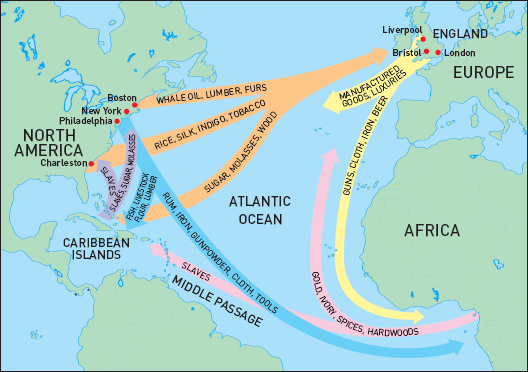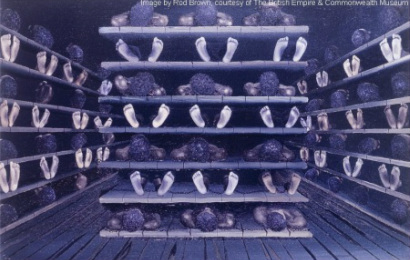Jillian Holbrook
AP European History 🇪🇺
335 resourcesSee Units
Development of the Slave Trade
As European countries expanded overseas, the African slave trade increased exponentially. There was a shortage of Native American laborers due to conflict and disease; additionally, indentured servants working on plantations in the Americas declined. An increased and unmet demand for plantation workers meant that more slaves had to be imported.
Africans who were sold into slavery had been enslaved by their captors during internal conflicts in Africa. In exchange for finished goods like guns, pottery, and food, Africans would trade their captured slaves to European slave traders to be sold off in the Americas. In other words, some Africans began to sell their own people for these finished goods and for protection.
The first slaves arrived in North America in 1619, but slaves had been sold in the West Indies and Brazil long before this. There was always a high demand for laborers on sugar plantations as well as for tobacco farming, coffee farming, and gold mining.
Due to the extreme living and working conditions they were subjected to, African slaves had a higher mortality rate in the Americas. This led to more and more slaves being imported from Africa to continuously sustain the need for a large workforce.

Image Courtesy of Britannica
Triangular Trade
Between 1500-1800, an estimated 12 million African Americans were forcibly brought to North and South America during the slave trade. The transatlantic slave trade was the system of buying, selling, and transporting African people to the Americas and other parts of the world as slaves. It was a major part of the Atlantic trade network, known as the triangular trade, which also included the trade of goods such as sugar, tobacco, tea, rifles, and other products.

The Triangular Trade; Image Courtesy of the Smithsonian Learning Lab
The voyage from Africa to the Americas, known as the Middle Passage, was one of the most deadly and brutal aspects of the slave trade. Slaves were kept chained in the steerage in extremely close quarters, given little food, and subject to a variety of diseases on the ships. If they survived, their lives on the plantations were harsh as well. The practice of “seasoning” slaves was common; slaves were trained in new skills, given new names, and learned the basics of the English language to show they were no longer free.

Image Courtesy of Middle Passage Weebly
Slaves were seen as property and, in effect, had no legal rights; they could be bought, sold, traded, or inherited. Masters were permitted to whip their slaves, many slaves were not allowed to gather in large groups, and slave marriages were not recognized by law. Moreover, slaves were often subjected to cruel and inhumane treatment, including physical abuse, sexual abuse, and separation from their families.
Europeans imposed their culture and beliefs on those they conquered. They converted their slaves to Christianity, preaching that they should accept lives in bondage under their masters.
The slave trade continued until the 1800s, with England ending the slave trade in 1807. However, slavery continued in the United States and South America until the late 1800s. The United States ended slavery in the South during the Civil War in 1863, and Brazil ended slavery in 1888. The repercussions of the slave trade and the racism that stemmed from it continue to be seen today.
🎥 Watch: AP European History - Age of Exploration
Browse Study Guides By Unit
🎨Unit 1 – Renaissance & Exploration
⛪️Unit 2 – Reformation
👑Unit 3 – Absolutism & Constitutionalism
🤔Unit 4 – Scientific, Philosophical, & Political Developments
🥖Unit 5 – Conflict, Crisis, & Reaction in the Late 18th Century
🚂Unit 6 – Industrialization & Its Effects
✊Unit 7 – 19th Century Perspectives & Political Developments
💣Unit 8 – 20th Century Global Conflicts
🥶Unit 9 – Cold War & Contemporary Europe
📚Study Tools
🤔Exam Skills
👉Subject Guides

Fiveable
Resources
© 2025 Fiveable Inc. All rights reserved.